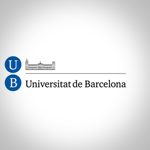 |
University of Barcelona
|
|
The University of Barcelona (UB) was founded in 1450. Today it boasts of a student body of 63,020 and a research staff of 5,312 members. Degrees are offered in 73 different areas of teaching with numerous postgraduate and doctorate programs as well as continuing education courses. The University of Barcelona (UB) is the largest of the six universities of Barcelona and of the ten in Catalonia. The UB is ranked the first Spanish university, and the twenty third European institution, in scientific quality and productivity. It manages in average 150 European projects per year, for an amount of about 8,6 million euro a year. The University of Barcelona develops all its activities related to the research in Europe through its European Research Projects Office, a unit in charge of the promotion of EC programmes, technical assistance to the elaboration of proposals and management of projects with participation of researchers of the UB, coordinated by the Vice-rector for Innovation and Transfer of Knowledge. http://www.ub.edu/web/ub/ca/ |
|
Key Persons |
|
 |
Dr. Gema Campo-Francés holds a Fine Arts Degree with the Conservation speciality (1982) and a PhD in Fine Arts (Conservation) (1988), both from the University of Barcelona. After some years of free-lance conservation work, she started working at the University of Barcelona (1986). She is currently a Full Professor at the Conservation Section of the Faculty of Fine Arts (University of Barcelona) and the PI of the group Conservation of Heritage (Acknowledged Research Group by the Catalan Government, SGR 2009-2013 and SGR-2014-2016). Her field of specialization is the conservation of easel paintings. She has lead many research projects, of which two were funded by the Spanish Ministry of Education and Science: Conservation problems in transferred wall paintings. Alterations caused by the ageing of the polyvinyl acetate (PVAc) used in their transfer (BHA 2002-02411), 2002-2005 and The identification of degradations caused to cultural heritage by PVAc. Treatment proposals, (HUM 2006-05345), 2006-2009. Another important research project that has been renewed each year non-stop from 2002 to the present day (2014) is the Study, documentation and characterization of materials and techniques of the graphic collection of Salvador Dali?, funded by the Fundacio? Gala-Salvador Dali?. In collaboration with engineers, research projects have been developed such as: Prediction of the climatic changes inside the Saint Michael Chapel during conservation works through a simulation model of heat transfer (Museu d’Histo?ria de la Ciutat de Barcelona) 2013. Throughout the years, she has also lead the examination and technical documentation of many works of art, both from private sources and from museums, such as the Fundacio? Gala-Salvador Dali?, Museu d’Histo?ria de Catalunya, etc. She has directed four conservation PhD thesis in the last years and four more are currently underway.
|
 |
Dr. Marta Oriola got a Degree in Fine Arts with the Conservation speciality in 1997 from the University of Barcelona. She then got a Master of Arts in the Conservation of Fine Art, Easel paintings speciality, from the Northumbria University (UK, 2000). From 2000 to 2003 she worked at the Conservation Department of the Cleveland Museum of Art (EUA) to then return to Barcelona to work as a free-lance conservator. In 2007 she started working at the Conservation Section of the Faculty of Fine Arts (University of Barcelona) with a 5 year contract to do both teaching and research. She defended her PhD Non-destructive condition assessment of painting canvases using NIR spectrometry at the University of Barcelona in 2012. During these years she also participated in two other research projects that were: The identification of degradations caused to cultural heritage by PVAc. Treatment proposals, (HUM 2006-05345), 2006-2009 and “New conservation challenges in the conservation of nine paintings by F. Artigau: problems caused by the degradation of their plywood support” (UB- Precompetitius, 2009-2010). She is currently an Adjunct lecturer at the Faculty of Fine Arts where she teaches easel paintings conservation. Her research interests focus on the degradation of the canvas support in paintings and in finding new ways to counteract these.
|
 |
Dr. Anna Nualart-Torroja obtained a degree in Fine Arts with a Conservation speciality in 1989, and a PhD in 2007, both at the University of Barcelona. Her major research projects have focused on the study of materials used in the artistic practice and in conservation treatments including the cleaning challenges of sensitive painted surfaces. She has participated as an investigator in two research projects funded by the Spanish Ministry of Education and Science: Conservation problems in transferred wall paintings. Alterations caused by the ageing of the polyvinyl acetate (PVAc) used in their transfer (BHA 2002- 02411), 2002-2005 and The identification of degradations caused to cultural heritage by PVAc. Treatment proposals, (HUM 2006-05345), 2006-2009 and has been the PI of the UB funded project: “New conservation challenges in the conservation of nine paintings by F. Artigau: problems caused by the degradation of their plywood support” (2009-2010). She has carried out research mainly in the conservation of paintings on wood and canvas regarding different topics such as dirt removal, gap-filling materials and the identification of ancient technologies used in Romanesque altar frontals. The imaging diagnosis is also part of her work since 2006, when she got a supervisor license for radioactive installations. For more than 25 years she has been carrying out conservation projects for many museums and foundations in Spain, such as the Pedralbes Monastery in Barcelona, the Prado Museum in Madrid, the Gala-Salvador Dali? Foundation, La Caixa Foundation, the City History Museum of Barcelona, the Barcelona City Council, or the Conservation Centre of the Government of Catalonia. She is currently an Adjunct Lecturer in the conservation of paintings, teaching both at the Conservation Bachelor’s Degree and at the Master of the Faculty of Fine Arts (UB). She has directed a PhD thesis defended in 2012 and is currently directing another one which will be defended in 2015.
|
 |
Dr. Cristina Ruiz-Recasens obtained a Degree in Fine arts with the Conservation speciality in 2002 at the University of Barcelona. From 2003 until today she has been participating in the research project Study, documentation and characterization of materials and techniques of the graphic collection of Salvador Dali?, funded by the Fundacio? Gala- Salvador Dali?. In 2005 she started working at the Conservation Section of the Faculty of Fine Arts (University of Barcelona) where in 2011 she defended her PhD Thesis Evaluation of the effects caused by the use of PVAc in lining modern posters. During these years she also participated in the research project funded by the Spanish Ministry of Education and Science The identification of degradations caused to cultural heritage by PVAc. Treatment proposals, (HUM 2006-05345), 2006-2009. She has done research stages at the Museum Conservation Institute, Smithsonian Institution (USA) and at the Victoria & Albert Museum (UK). Her main current research project is looking at the effects of acid vapours and semi-rigid gels in parchment artefacts in collaboration with the School of Conservation of The Royal Danish Academy of Fine Arts. She is also currently working on the cleaning of paper artefacts by using a microblasting technique with powdered cellulose. Nowadays she is a Lecturer at the Conservation Section of the Faculty of Fine Arts (UB) where she teaches graphic art conservation at the Bachelor and Master Degrees. She is also co-director of a PhD thesis that will be defended in 2016.
|





